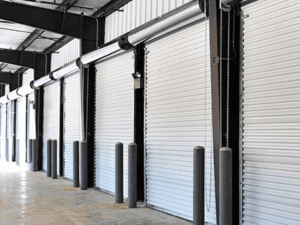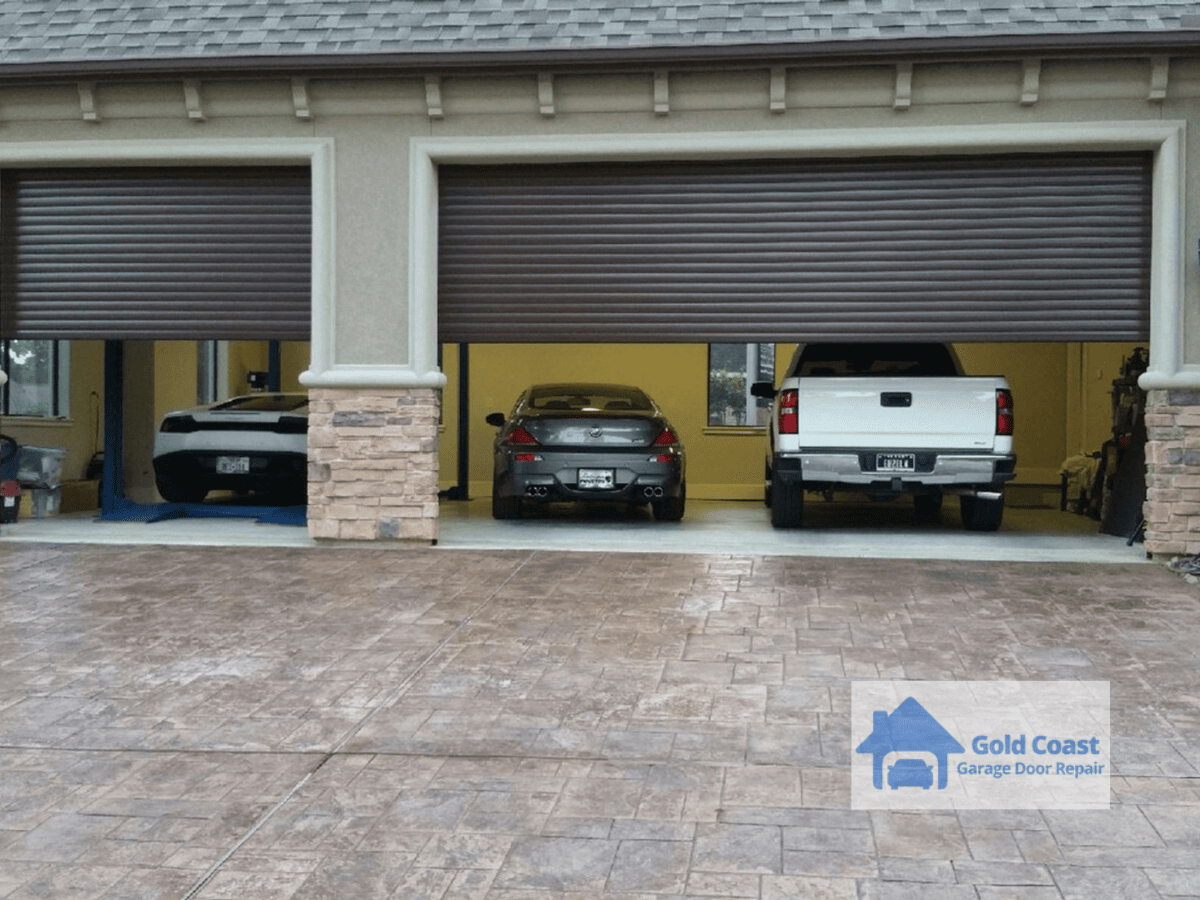Rollup Door Problems (And How To Fix Them)
If you’re like most business owners, you rely on your rollup door to keep your business running smoothly. But what happens when your rollup door starts giving you problems? In this blog post, we’ll discuss some of the most common rollup door problems, and we’ll also provide tips for how to fix them. So read on to learn more!
Reasons Your Overhead Door Won’t Close or Open
Rollup doors do a lot of great things for your facilities — they protect them from the elements and guard against invaders. They also hide your business’s merchandise away from prying eyes. However, these abilities can only hold true if the door itself works as intended. A range of common rollup door problems can affect the door’s capacity to protect your investment. Even high-quality rollup doors may see issues over time due to natural occurrences like rust and aging.
Is your rollup door uneven? Does it struggle to open or close all the way? If so, it’s likely experiencing one of the potential issues an overhead door may encounter throughout its lifetime. Luckily, many of these problems are preventable as long as you understand how they arise and how to address them. Here are seven possible reasons why your garage door is giving you trouble. These common issues can range from misaligned tracks to worn-out springs or cables, all of which can disrupt the smooth operation of your door. By identifying the root cause early and applying the proper garage door troubleshooting tips, you can save both time and money on repairs. Regular maintenance and a proactive mindset are key to keeping your garage door functioning flawlessly.
IT LACKS A POWER SOURCE
 Loss of power can be a common reason why people need to perform commercial overhead door troubleshooting. Be sure you know when you’re dealing with a run-of-the-mill power outage versus an isolated incident. If your building still has electricity, and your garage door isn’t working, there may be an issue with the breakers. If this has happened, your door may remain in an open or closed position.
Loss of power can be a common reason why people need to perform commercial overhead door troubleshooting. Be sure you know when you’re dealing with a run-of-the-mill power outage versus an isolated incident. If your building still has electricity, and your garage door isn’t working, there may be an issue with the breakers. If this has happened, your door may remain in an open or closed position.
Similarly, there may be an issue with your remote or wall switch — such as an out-of-sync remote or faulty electrical wiring. If you’ve identified a problem with the wiring, shut off the power supply before attempting to fix or troubleshoot anything.
There could also be an issue with the garage door opener itself. If this is the case, you’ll need to check that the opener is properly plugged into an outlet and that the circuit breaker hasn’t been tripped. If all of these things are in working order, there may be a problem with the motor on the opener.
IT’S BEING OBSTRUCTED
Obstructions can be physical objects or even particles of dust and dirt. When investigating why your rollup door is jammed, no option is too extreme for why it won’t open or close. Small particles can easily build up and become caked-on grime that interferes with your door’s operation. A physical obstruction like a piece of loose material is easy enough to remove. Eliminating dirt and grime will require a bit more effort.
If you have an automatic opener, use a brush attachment on your vacuum cleaner to remove any buildup on the tracks. For a manual door, you’ll need to physically clean the grime off the tracks with a rag. Once you’ve removed the obstructions, your door should operate more smoothly.
ITS PARTS ARE WORN-OUT OR BROKEN
As components age, they can make your rollup door hard to open, and they will eventually require replacements. Torsion springs and bearings are standard subjects of overhead door wear and tear.
In many types of doors, torsion springs control the up and down movement and withstand numerous cycles — anywhere up to 50,000 cycles. Eventually, they wear out, though, and the environment can contribute to this. For example, humidity makes them more susceptible to rust. Whether you need a spring adjustment or an entire replacement, it’s beneficial to know when the torsion spring is causing the problems. For safety, remember always to call a professional to handle torsion spring replacements.
The end bearing plates are another area of the door that could become worn out over time. These bearings support the weight of the spring and the entire door. Over time, they may begin to grind, forcing the rollup door to work harder and operate noisily. Worn out end bearing plates may bind up, preventing movement and putting the door out of alignment. You can detect any signs of wear around the end bearing plates if you find any black dust or powder around the component, which indicates metal grinding against metal.
Automatic doors need to be level in order for the opener’s photo eye sensor to work properly. If your door isn’t level, it will cause the sensor to misread the environment and fail to open or close the door. You can use a tape measure to check whether your door is level. Simply measure from the bottom of the door to the ground on both sides. If there’s a difference in these numbers, your door isn’t level. To fix an unlevel door, you may need to adjust the door’s tension springs or tracks, but it’s important to exercise caution or consult a professional to avoid injury. Ensuring the door is properly aligned will help the system function smoothly and is especially crucial if you’re using the best smart garage door opener, as these advanced devices rely on precise sensor readings. Regular maintenance can keep your door operating efficiently and extend the lifespan of your opener.
ITS COMPONENTS ARE MISALIGNED
Misaligned parts are a common culprit for rollup door problems. Misaligned hoods, fascias and tracks or too-tight guides can lead to a door that scrapes against the guides, which can cause property damage and take the paint off the panels. This issue affects both the door’s aesthetic quality and performance. This kind of predicament is one you want to avoid whenever possible — one problem is easier to solve than multiple.
Rust can also change a door’s alignment — this often happens when the track becomes corroded. Rust can negatively impact how the door runs over the tracks, causing your rollup door to be uneven. If the tracks become misaligned, a domino effect may occur with other system components. The curtain could sustain damage as it crosses over this uneven path, or the motor could burn out from working harder.
ITS MOTOR IS FAULTY
If your electric rollup door won’t open, the jam may be due to a motor-based issue. Because motors are such complex parts, it may be difficult to pinpoint the exact cause without the expertise of an overhead door professional. If you decide to give the motor a preliminary inspection before calling, make sure the door is turned off, as well as the power supply.
While complete motor failure is easier to detect, you might have an issue in which the motor doesn’t sync up with the remote or wall switch. Faulty sensors are another common malfunction of motor-powered doors. When this happens, your overhead door won’t be able to sense obstructions and subsequently reverse or stop as needed.
ITS SPRING TENSION IS TOO HIGH
If your door’s springs are tensioned more than what’s recommended, they become more likely to break. In addition to this issue, incorrect tension makes your door harder to operate, which may be causing some of the concerns you’ve encountered. When the spring tension is too high, the door becomes difficult to close and easy to open. When it is too low, it becomes difficult to open and easy to close. If you suspect this is why your door is stuck, it’s best to call a professional for a rollup door tension adjustment to ensure every mechanism is adequately calibrated.
Commercial Rollup Door Troubleshooting
Commercial rollup doors are an essential part of many businesses, providing security and protection from the elements. However, these doors can occasionally malfunction, causing frustration and disruptions to business operations. The good news is that most commercial rollup door problems can be easily fixed with a little troubleshooting. Here are some common issues and their solutions:
- Door will not open or close: This is usually caused by an issue with the sensors or the motor. First, check to make sure that the power is turned on and that the door is properly plugged in. Then, check the sensors to see if they are dirty or obstructed. If they are, clean them off or move the obstruction out of the way. Finally, check the motor to see if it is working properly. If it isn’t, you may need to replace it.
- Door is open but won’t stay up: This is generally caused by a problem with the springs or cables. First, check to see if the springs are broken or stretched out. If they are, you will need to replace them. If the problem persists, check the cables to see if they are frayed or broken. If they are, you will also need to replace them.
- Door is open but won’t close: This is often caused by an issue with the sensors or motor, as mentioned above. First, check to make sure that the sensors are clean and unobstructed. Then, check the motor to see if it is working properly. If neither of these solutions works, you may need to adjust the tension on the springs or cables.
By following these troubleshooting tips, you should be able to fix most commercial rollup door problems quickly and easily. For roll-up door owners, Roll-Up Smart Garage Doors ensure compatibility and smooth operation.
Fixing Your Rollup Door
Garage Roll Door Repairs is a relatively easy process that can be completed in a few hours. The first thing you need to do is identify the problem. Is the door off track? Is the opener not working? Is the spring broken? Once you know what the problem is, you can begin to troubleshoot. If the door is off track, you will need to realign the tracks. If the opener is not working, you will need to check the batteries and connections. If the spring is broken, you will need to replace it. Once you have fixed the problem, you can test the door by opening and closing it several times. If it works properly, then you are finished. However, if the door does not work properly, you may need to call a professional for help.
What is Required To Adjust A Rollup Door?
A rollup door, also known as a rolling door or roller door, is a type of door used to close off an opening in a building such as a garage, shed, or warehouse. Rollup doors come in a variety of sizes and can be made from different materials such as wood, steel, aluminum, or fiberglass. Adjusting a rollup door is not a difficult task, but there are certain things that need to be taken into consideration before getting started.
First, it is important to identify the problem areas. Common issues include misaligned tracks, uneven door panels, or worn-out hardware. Once the problem areas have been identified, the next step is to gather the necessary tools and supplies. This may include a ladder, screwdriver, hammer, drill, measuring tape, and replacement parts if needed. With everything in place, the final step is to follow the manufacturer’s instructions and make the necessary adjustments.
Depending on the severity of the issue, this might involve simply tightening loose screws or bolts. In more serious cases, it might require cutting and drilling new holes for the tracks or replacing damaged panels. Regardless of the extent of the work required, adjusting a rollup door is a relatively straightforward process that can be completed by most do-it-yourselfers.
Conclusion
That’s all for now. We hope you found this post helpful. If you have any questions or comments, please let us know in the comments below. And if you need help fixing your rollup door problems, don’t hesitate to contact us – we would be happy to assist you. Thanks for reading!
References:
Common Problems Associated With Roll-up Garage Doors

